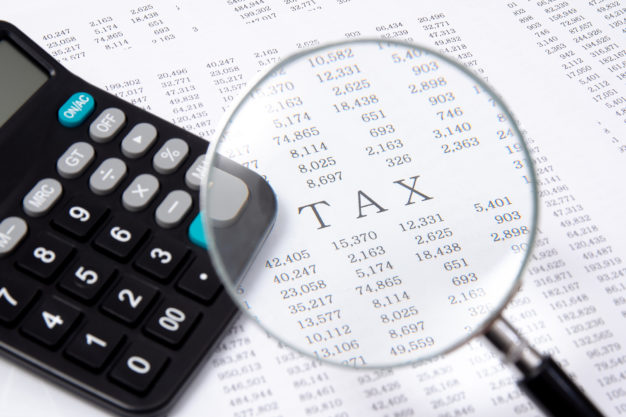2025 Standard Mileage Rates Released (Notice 2025-5; IR-2024-312)
The IRS released the optional standard mileage rates for 2025. Most taxpayers may use these rates to compute deductible costs […]
Read MoreThe Treasury Department and IRS have issued final regulations amending regulations under Code Sec. 752 regarding a partner’s share of recourse partnership liabilities and the rules for related persons.
Code Sec. 752(a) treats an increase in a partner’s share of partnership liabilities, as well as an increase in the partner’s individual liabilities when the partner assumes partnership liabilities, as a contribution of money by the partner to the partnership. Code Sec. 752(b) treats a decrease in a partner’s share of partnership liabilities, or a decrease in the partner’s own liabilities on the partnership’s assumption of those liabilities, as a distribution of money by the partnership to the partner.
The regulations under Code Sec. 752(a), i.e., Reg. §§1.752-1 through 1.752-6, treat a partnership liability as recourse to the extent the partner or related person bears the economic risk of loss and nonrecourse to the extent that no partner or related person bears the economic risk of loss.
According to the existing regulations, a partner bears the economic risk of loss for a partnership liability if the partner or a related person has a payment obligation under Reg. §1.752-2(b), is a lender to the partnership under Reg. §1.752-2(c), guarantees payment of interest on a partnership nonrecourse liability as provided in Reg. §1.752-2(e), or pledges property as security for a partnership liability as described in Reg. §1.752-2(h).
Proposed regulations were published in December 2013 (REG-136984-12). These final regulations adopt the proposed regulations with modifications.
The amendments to the regulations under Reg. §1.752-2(a) provide a proportionality rule for determining how partners share a partnership liability when multiple partners bear the economic risk of loss for the same liability. Specifically, the economic risk of loss that a partner bears is the amount of the partnership liability or portion thereof multiplied by a fraction that is obtained by dividing the economic risk of loss borne by that partner by the sum of the economic risk of loss borne by all the partners with respect to that liability.
The final regulations also provide guidance on how a lower-tier partnership allocates a liability when a partner in an upper-tier partnership is also a partner in the lower-tier partnership and bears the economic risk of loss for the lower-tier partnership’s liability. The lower-tier partnership in this situation must allocate the liability directly to the partner that bears the economic risk of loss with respect to the lower-tier partnership’s liability. The final regulations clarify how this rule applies when there are overlapping economic risks of loss among unrelated partners, and the amendments add an example illustrating application of the proportionality rule to tiered partnerships. They also add a sentence to Reg. §1.704-2(k)(5) clarifying that an upper-tier partnership bears the economic risk of loss for a lower-tier partnership’s liability that is treated as the upper-tier partnership’s liability under Reg. §1.752-4(a), with the result that partner nonrecourse deduction attributable to the lower-tier partnership’s liability are allocated to the upper-tier partnership under Reg. §1.704-2(i).
In addition, the final regulations list in one section all the situations under Reg. §1.752-2 in which a person directly bears the economic risk of loss, including situations in which the de minimis exceptions in Reg. §1.752-2(d) are taken into account. The amendments state that a person directly bears the economic risk of loss if that person—and not a related person—meets all the requirements of the listed situations.
For purposes of rules on related parties under Reg. §1.752-4(b)(1), the final regulations disregard: (1) Code Sec. 267(c)(1) in determining if an upper-tier partnership’s interest in a lower-tier partnership is owned proportionately by or for the upper-tier partnership’s partners when a lower-tier partnership bears the economic risk of loss for a liability of the upper-tier partnership; and (2) Code Sec. 1563(e)(2) in determining if a corporate partner in a partnership and a corporation owned by the partnership are members of the same controlled group when the corporation directly bears the economic risk of loss for a liability of the owner partnership. The regulations state that in both these situations a partner should not be treated as bearing the economic risk of loss when the partner’s risk is limited to the partner’s equity investment in the partnership.
Under the final regulations, if a person owning an interest in a partnership is a lender or has a payment obligation with respect to a partnership liability, then other persons owning interests in that partnership are not treated as related to that person for purposes of determining the economic risk of loss that they bear for the partnership liability.
The final regulations also provide that if a person is a lender or has a payment obligation with respect to a partnership liability and is related to more than one partner, then the partners related to that person share the liability equally. The related partners are treated as bearing the economic risk of loss for a partnership liability in proportion to each related partner’s interest in partnership profits.
The final regulations contain an ordering rule in which the first step in Reg. §1.762-4(e) is to determine whether any partner directly bears the economic risk of loss for the partnership liability and apply the related-partner exception in Reg. §1.752-4(b)(2). The next step is to determine the amount of economic risk of loss each partner is considered to bear under Reg. §1.752-4(b)(3) when multiple partners are related to a person directly bearing the economic risk of loss for a partnership liability. The final step is to apply the proportionality rule to determine the economic risk of loss that each partner bears when the amount of the economic risk of loss that multiple partners bear exceeds the amount of partnership liability.
The IRS and Treasury indicate that they are continuing to study whether additional guidance is needed on the situation in which an upper-tier partnership bears the economic risk of loss for a lower-tier partnership’s liability and distributes, in a liquidating distribution, its interest in the lower-tier partnership to one of its partners when the transferee partner does not bear the economic risk of loss.
The final regulations under T.D. 10014 apply to any liability incurred or assumed by a partnership on or after December 2, 2024. Taxpayers may apply the final regulations to all liabilities incurred or assumed by a partnership, including those incurred or assumed before December 2, 2024, with respect to all returns (including amended returns) filed after that date; but in that case a partnership must apply the final regulations consistently to all its partnership liabilities.
The IRS released the optional standard mileage rates for 2025. Most taxpayers may use these rates to compute deductible costs […]
Read More
The IRS, in partnership with the Coalition Against Scam and Scheme Threats (CASST), has unveiled new initiatives for the 2025 […]
Read More
The IRS reminded disaster-area taxpayers that they have until February 3, 2025, to file their 2023 returns, in the entire […]
Read More
The IRS has announced plans to issue automatic payments to eligible individuals who failed to claim the Recovery Rebate Credit on their […]
Read More
Florida has issued motor vehicle sales tax rates by state as of January 15, 2025. Florida law allows a partial […]
Read More
For purposes of calculating the 2025 intangible personal property tax on governmental leaseholds, the Florida Department of Revenue has issued […]
Read More
The IRS, along with Security Summit partners, urged businesses and individual taxpayers to update their security measures and practices to protect against […]
Read More
The IRS has issued its 2024 Required Amendments List (2024 RA List) for individually designed employee retirement plans. RA Lists […]
Read More